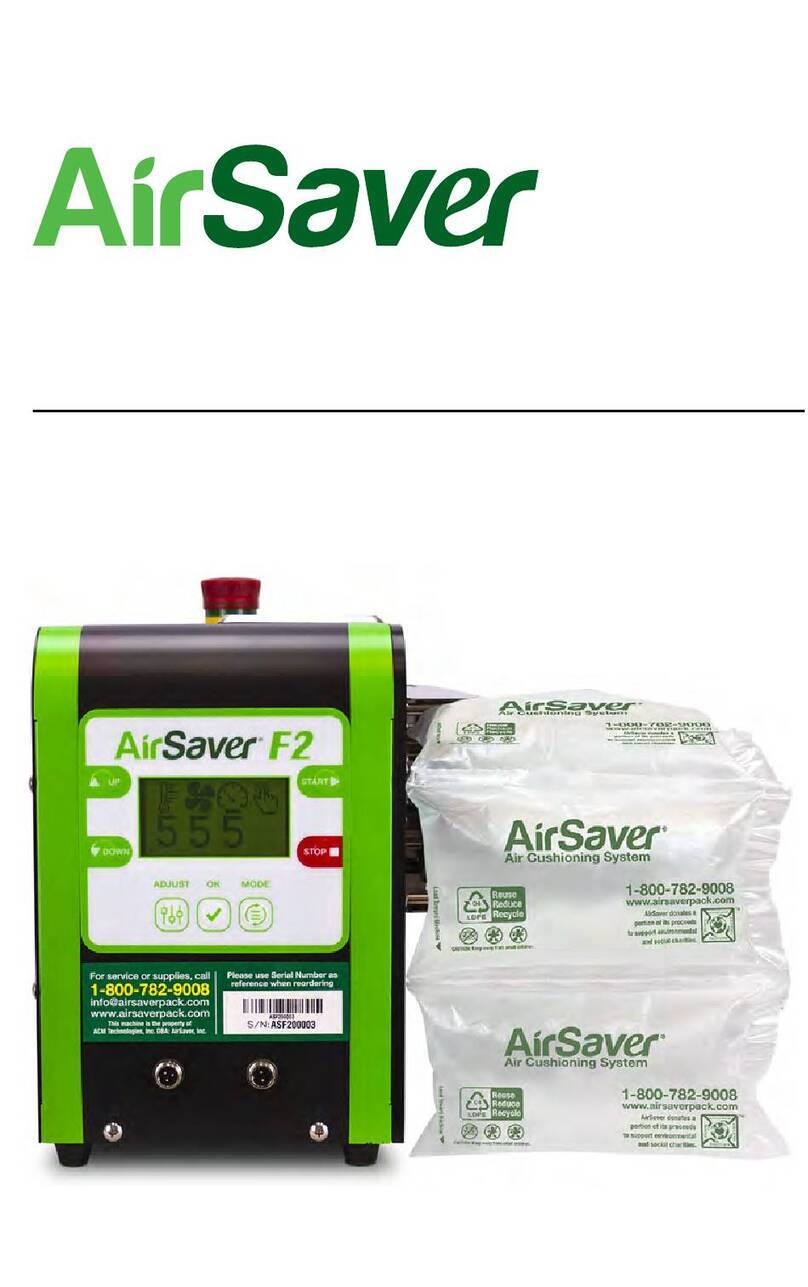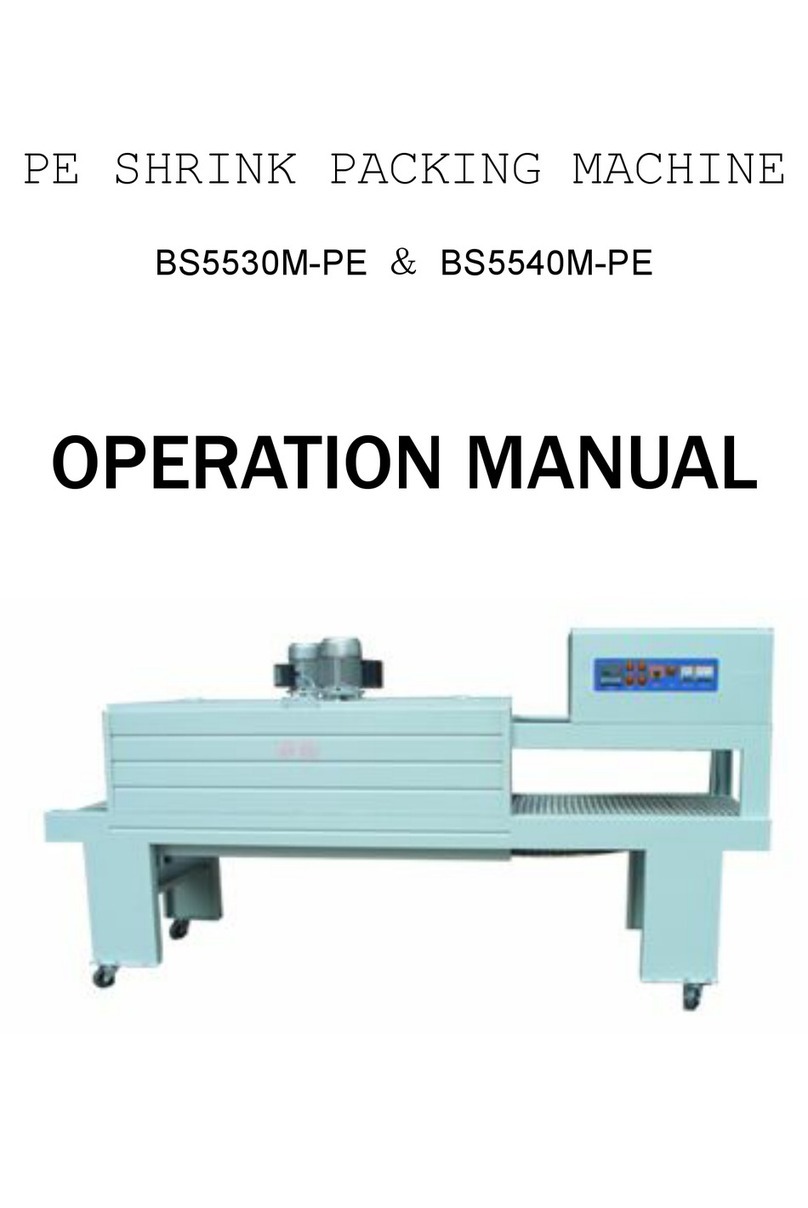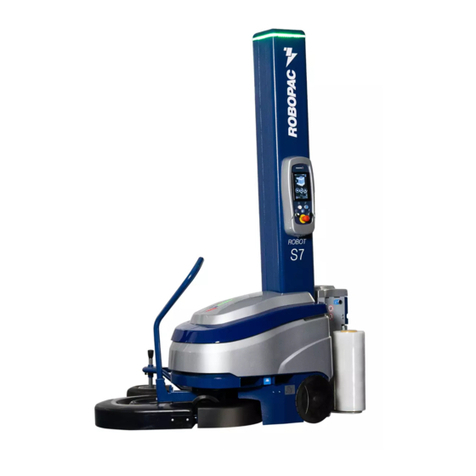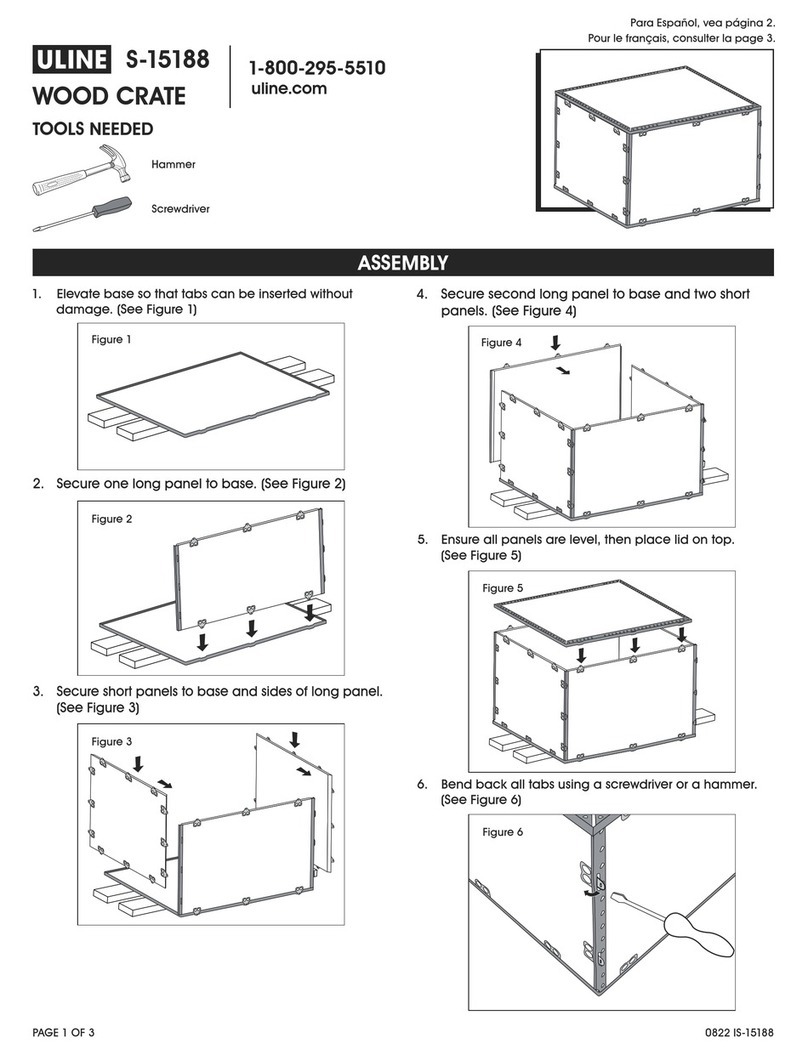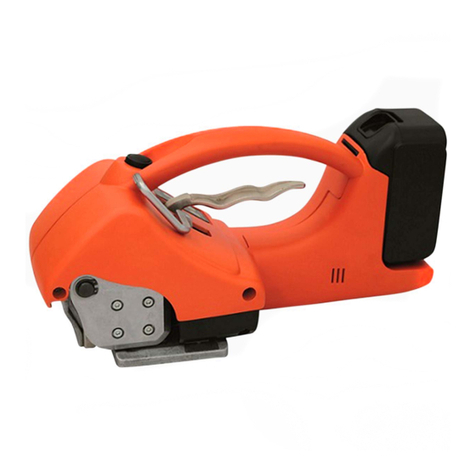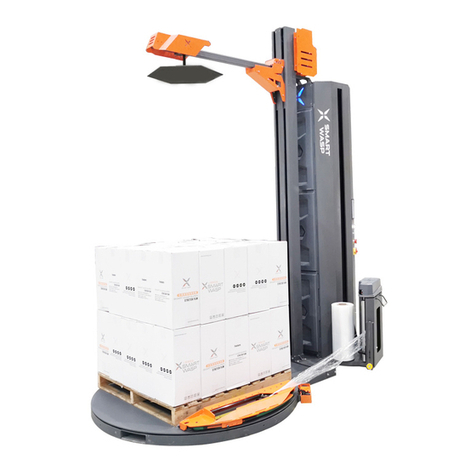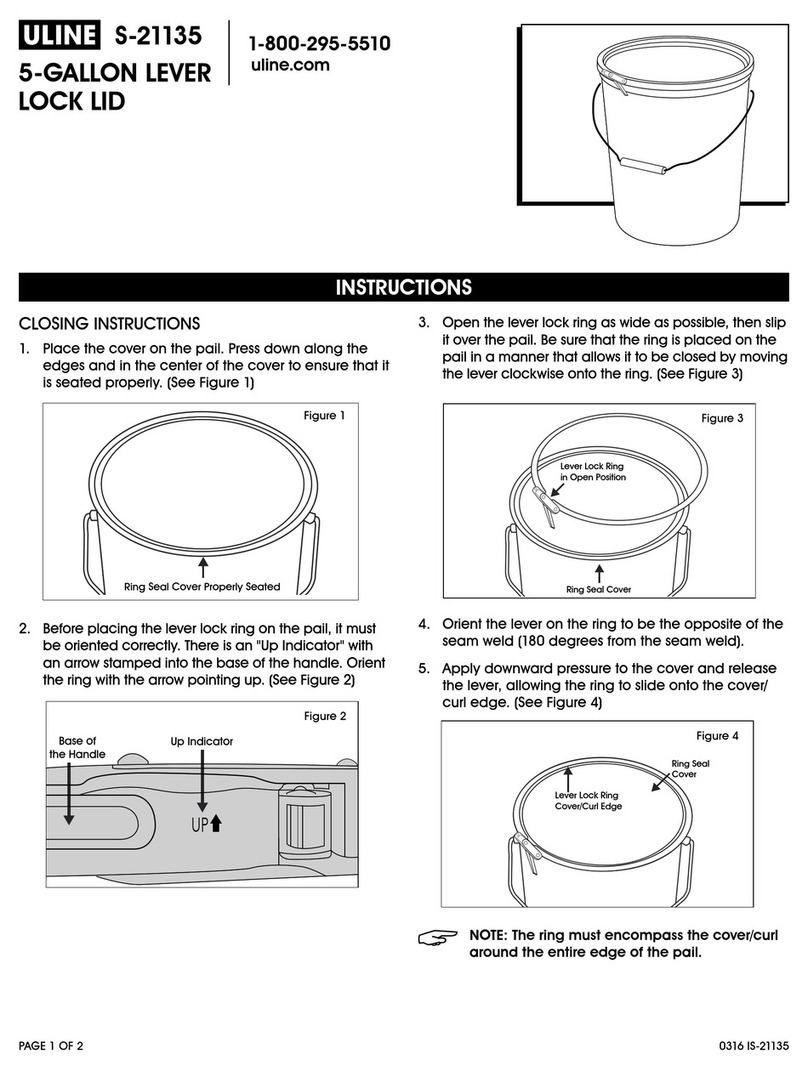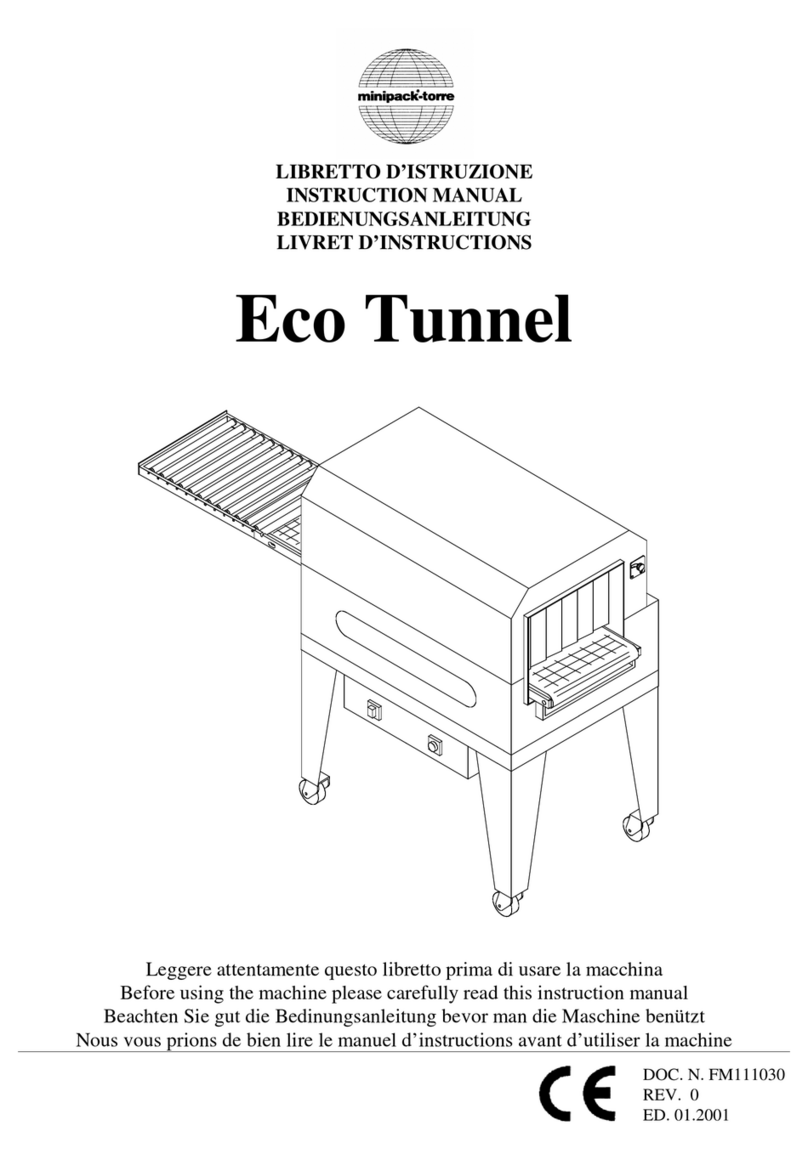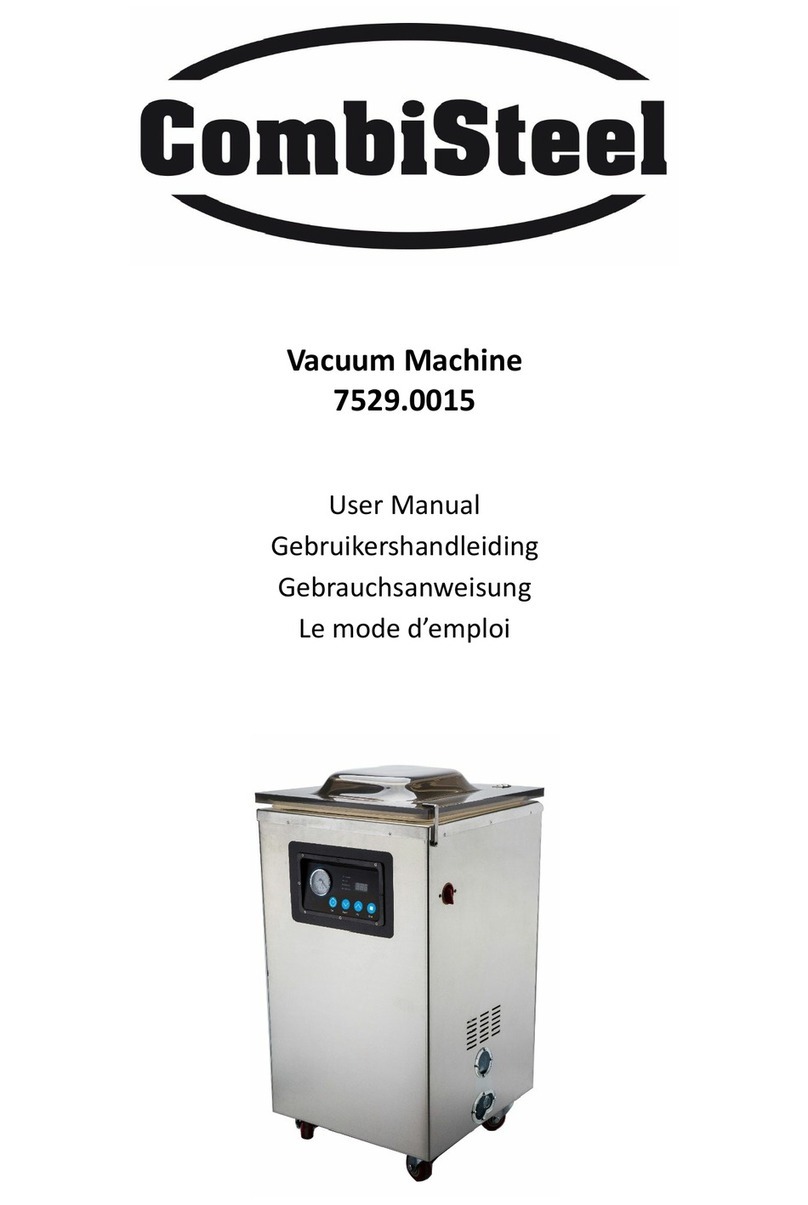
10
PREASSEMBLY OF P-625 & P-725 MACHINES
The P-625 and P725 Strapping machines are
normally pre-assembled and tested prior to
shipping, however if your P-625 is received with
the legs disassembled, the following procedure
should be followed. Open the top cover of the
P-625 and place the machine on a steady
working surface. Remove the temporary
wooden legs from the machine and install the
round machine legs by putting the leg
assemblies into the base of the machine with the
screw facing up and locking the down with the
M12 nuts and washers. Attach the casters to
the legs by screwing them into the base of the
legs. Once the legs have been installed, the
dispenser assembly can be mounted to
machine. On the Gear Box, remove the
setscrew in the Vent Plug.
FIGURE 8. P-625 LEG ASSEMBLY
The dispensers are designed to accept strap
core diameters of 8” (200mm), 9” (230mm), and
11” (280mm). Refer to Figure 10 to make the
adjustments.
1. For an 8” core diameter, position the holes
of the Reel Claw (item 6) to the #1 and #3
positions for all three Claws and screw the
claw in place with two M6x20 Screws.
2. For a 9” core diameter, position the holes of
the Reel Claw (item 6) to the #2 and #4
positions for all three Claws and screw the
claw in place with two M6x20 Screws.
3. For an 11” core diameter, position the holes
of the Reel Claw (item 6) to the #3 and #5
positions for all three Claws and screw the
claw in place with two M6x20 Screws.
LOADING STRAP INTO THE MACHINE
On the P-725 machine, open the Dispenser
access panel and remove the dispenser
assembly as shown on Figure 10.
1. Turn the Reel Nut Handwheel to disengage
the handwheel from the shaft.
2. Remove the Outer Flange from the shaft
and set aside.
3. Place a coil of strap on the Inner Flange
with the strap pay-off going clockwise as
shown on Figure 11. Allow the plastic wrap
to poke through the shaft. (Note: do not
remove the protective plastic wrap from the
strap coil)
4. Replace the Outer Flange and reinstall the
Reel Nut Handwheel.
5. Remove the protective plastic wrap from
the strap coil at this time.
6. Place the dispenser assembly back into the
rear-end of the machine. Make sure the
assembly is positioned correctly with the
Handwheel facing to the right and the ends
of the shaft resting in the machine brackets.
7. When the dispenser is installed correctly,
close the rear panel door.
On the P-625machine the same procedure is
followed as in the P-725 machine except, the
Inner Flange and Shaft assembly are not
removed from the machine and the strap coil is
loaded directly onto the machine.
